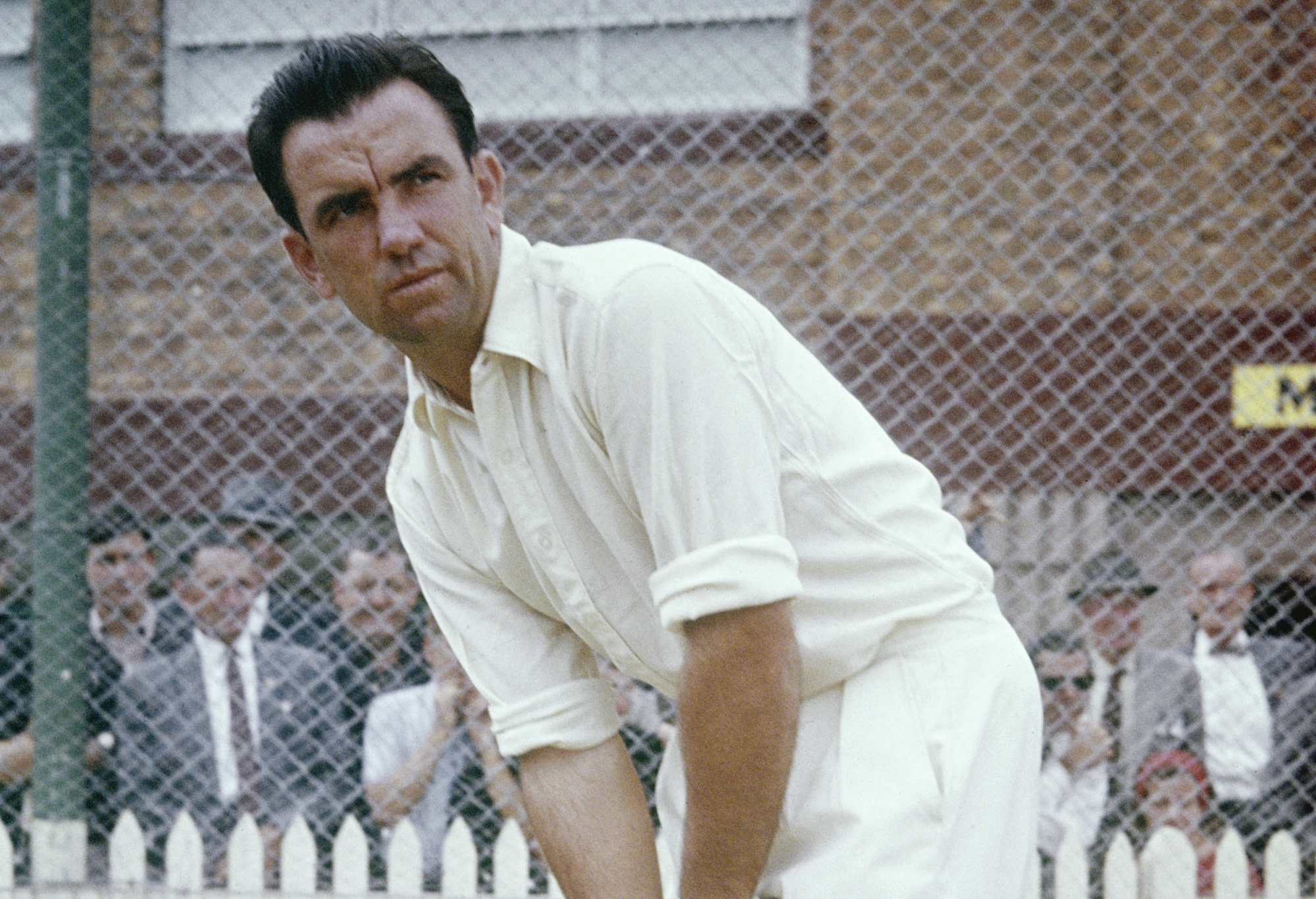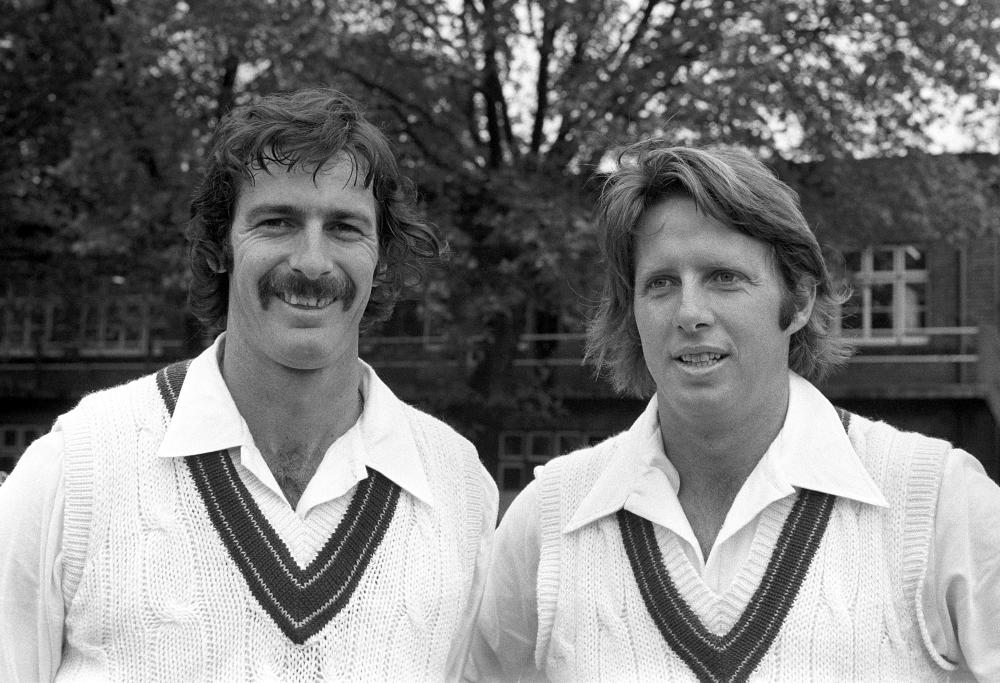The cricketing summer of 1977-78 started in Australia amidst controversy and uncertainty.
The cricketing fraternity was divided, with the rebels playing for the Packer money.
At one stage, the planned five-match series against India looked to be in doubt. But, at the end the series went ahead; and after some exciting cricket, the home side prevailed 3-2.
While Ian Chappell didn’t hide his feelings about the level of cricket played; good crowd gathered to watch action live. And, in this difficult time, two cricketers played big parts for the Aussie ‘establishment’ team at the time.
Bob Simpson was already on his 40s at the time. He was a strict disciplinarian, and would remain so for the rest of his life.
A steady, rather than a spectacular performer, he had to work hard to reach the top. After quitting the game as a player quite prematurely, he was more than happy to respond to a SOS call to save Aussie cricket a decade later.
Never to shy away from a challenge, he was ready to lead a group of inexperience and not so gifted cricketers for the India series.
But, as Simpson started his second innings as a Test cricketer, he found one superstar in his team – Jeff Thomson.
Like Simpson, Thommo was from NSW but most of his cricketing success came while playing for the Sunshine State.
He was a natural talent, a born fast bowler. During his school days, he and his schoolmate Lenny Durtanovich (the cricket world knows him as Len Pascoe), formed a formidable new ball attack, much feared and respected by the opposition batters.
In the northern summer of 1977, Thommo had a difficult time at England. After returning from injury, he struggled to find his rhythm there. But, it was always believed that he would become a different ‘beast’ in the fast bouncy pitches Down Under.
His involvement in the India series was more due to accident than design. Unable to play in World Series Cricket due to some contractual obligations, he nevertheless would give his 100% for the Aussie cause. In the process he would even get into a verbal brawl with a proud Rajput at the SCG.
While the Chappells and their company were busy playing floodlit cricket for the TV audiences, Simmo and Thommo were the key figures as the official Australian team fought for supremacy against India (home) and the Windies away.

(Photo by Don Morley/Allport/Getty Images/Hulton Archive)
It would be an understatement to say that Simpson and Thomson were the two most experienced players in the team for the opening Test at the Gabba in early December.
There were six debutants, fast bowler Alan Hurst was playing his second Test; Craig Serjeant his fourth. Gary Cosier from Victoria, picked here to open the innings was a veteran in the team playing his 10th Test.
Instead of Rod Marsh, it was Steve Rixon with the gloves; Wayne Clark, not Lillee, was Thommo’s new ball partner.
In the middle order, Peter Toohey from NSW, the poor man’s Doug Walters was expected to combat the threat of Indian spinners, along with his skipper.
In fact, it was Toohey who emerged as the batting saviour on a difficult Gabba wicket on the opening day. After Simpson surprised a few people by opting to bat first, the home team could only muster 166 all out, Toohey the last man dismissed for 82.
Simpson’s renewed rivalry with his old foes (and friends), Bedi and Pras, started badly, as Bedi dismissed him for just seven with the Indian skipper finishing with 5-55.
The Aussie did lot better in the second innings. After taking a small first innings lead of 13, the home side quickly slumped to 3-7. But then Simpson contributed 89 with his old hands, and useful contribution from others helped set up a target of 341.
The last-wicket pair of Thomson (41 not out) and Hurst (26) put on a 50-run partnership with both using the long handle well. These runs would prove extremely vital on the final count.
India responded well with vice-captain Sunil Gavaskar scoring a ton, but at the end Thommo had Chandra caught behind for a duck with Indian still 17 runs shy. Thomson finished with seven wickets in the match and Clark, his new new-ball partner took eight. Rixon took five catches behind the stumps.
Simpson’s 176 in the first innings combined with Tony Mann’s hundred as a nightwatcher in the second match propelled the hosts to a two-wicket win at the WACA.
Going into the third test at the MCG, India’s record in Australia was 11 played, 10 lost, 1 drawn.
But, under Bedi, they fought back well to win back to back tests in Melbourne and Sydney. Chandra’s leg spin was proving especially difficult to handle for the young batters. It seemed that only Toohey and Simpson possessed the necessary technique to play him properly.
So everything hinged on the six-day decider at the Adelaide Oval. Following successive defeats there were changes in the Aussie top order – Rick Darling and Graeme Wood were picked to make their debuts, forming their ‘famous’ partnership.
Graham Yallop, a left-hander, was recalled to bat at first drop with Chandra in the selectors’ mind.
Over at Dacca I followed this game over the Indian radio. My support was very much with Australia, as I considered Simpson’s men as the true patriots. Much to my delight, the Aussies got off to a dream start with the opening pair of Wood and Darling coming good.
They put on 89; and with Yallop and Simpson both scoring tons, the home-side piled up a massive score of 505.
As the Indians started their reply, they found Thommo bowling at his fastest. During the fourth test at the SCG, Thomson had exchanged few words with Chetan Chauhan, and it was clear he had a score to settle.
He dismissed Gavaskar and Mohinder Amarnath in quick succession. And when Clark dismissed Chauhan cheaply, the tourists were 3-23. But then disaster struck the home team. After bowling 3.3 over Thommo had to leave the field due to an injury. He won’t bowl anymore in the match.
This is where the brilliance of Simpson as a captain came into play. He carefully rotated his young bowlers; he himself called upon his old fingers to bowl a bit of leg spin. India could only manage 269. But, Simpson didn’t enforce the follow on as his bowlers needed some rest.
India were set a fourth innings target of 493; but while they produced a brave effort; they eventually lost by 47 runs. Off spinner Bruce Yardley produced a marathon bowling effort, finishing with 4-134 from 43 eight-ball overs.
Simpson himself bowled 20-plus overs; and quite appropriately, he sealed the victory, dismissing Chandra, caught behind.
This completed a memorable comeback series for the old man. He was the leading run scorer in the series with 539 runs, including two tons.
Thomson also played his part; He took 22 wickets (Avg. 23.45). Adelaide was certainly the high point for the ‘official’ Aussie team during the Packer era.
In February 1978, the Aussies left for the Windies under Simpson’s leadership. Thommo was promoted to vice-captaincy duties. It is believed that Simpson highly recommended him for the job.
But, this didn’t work very well. While both were true professionals, always committed to producing their best; their approach to life beyond cricket was somewhat different.
In any case, the job was made extremely difficult by the return of the Packer ‘s men in the Windies team. The Packer cricket was off at the time, and unlike their Australian counterparts, the Windies board were happy to welcome back the rebels. The board was also worried about lack of revenue in the possible absence of the star players.
The difference between the men and the boys was immediately apparent as the home side won the first two Tests easily. But, in the second match at Bridgetown, Thommo produced a memorable spell, that has become a part of cricketing folklore.
He bowled only 13 overs but took 6-77. Most of the people present at the Kensington Oval at the time, including Tony Cozier, considers it to be the fastest display of pace bowling ever seen in the Caribbean.
There were talks of a clean sweep in the press, but Clive Lloyd and the other top players left the series following a dispute with the board; and the last three Tests were an even contest.
Seven players, including six West Indians made their debut in the third match test at Georgetown. The lesser lights from the two nations came into prominence.
Centuries form Wood and Serjeant helped the Aussies secure a three-wicket win in Guyana. For the Winides, veteran Vanburn Holder bowled superbly to take 6-28 in the first innings of the fourth Test at the Queen’s Park Oval; opener Greenidge (Alvin, not Gordon) top-scored in the second innings with 69.
The series ended 3-1 as the fifth Test at Kingston finished in an exciting draw in slightly controversial circumstance. Toohey’s fine hundred on the opening day gave his side the edge, and the spinners, Jim Higgs and Yardley, very nearly brought them to victory, but the last-wicket pair survived to ensure a draw.
As expected, Kingston 1978, was the end for Simpson as a Test cricketer. In the Caribbean, he just managed 199 runs at 22.11. There is no doubt that he was mentally and physically exhausted playing 10 Tests in just five months.

Dennis Lillee, left, and Jeff Thomson. (PA Images via Getty Images)
Thommo also looked tired, and perhaps a bit disinterested, after his blistering spell at Bridgetown. Still, he ended up with 20 wickets at a respectable average of 28.80. Overall, in 10 Tests under Simpson, he took 42 wickets at exactly 26 apiece.
Thommo would return to the Caribbean a year later as part of the WSC team. After the end of the Packer saga, he would struggle to keep a regular place in the Test team.
Perhaps, his most memorable effort in the latter part of his career was with the bat, very nearly winning the MCG Test of 1982-83 sharing a last-wicket stand with Allan Border.
So Simmo and Thommo helped Australian cricket pass a difficult season. A 3-2 victory over India and 3-1 defeat in the Caribbean can’t be termed great results; but they were definitely satisfactory in light of what happened in the next Australian summer.
>Cricket News

%20(3).jpeg)





0 Comments